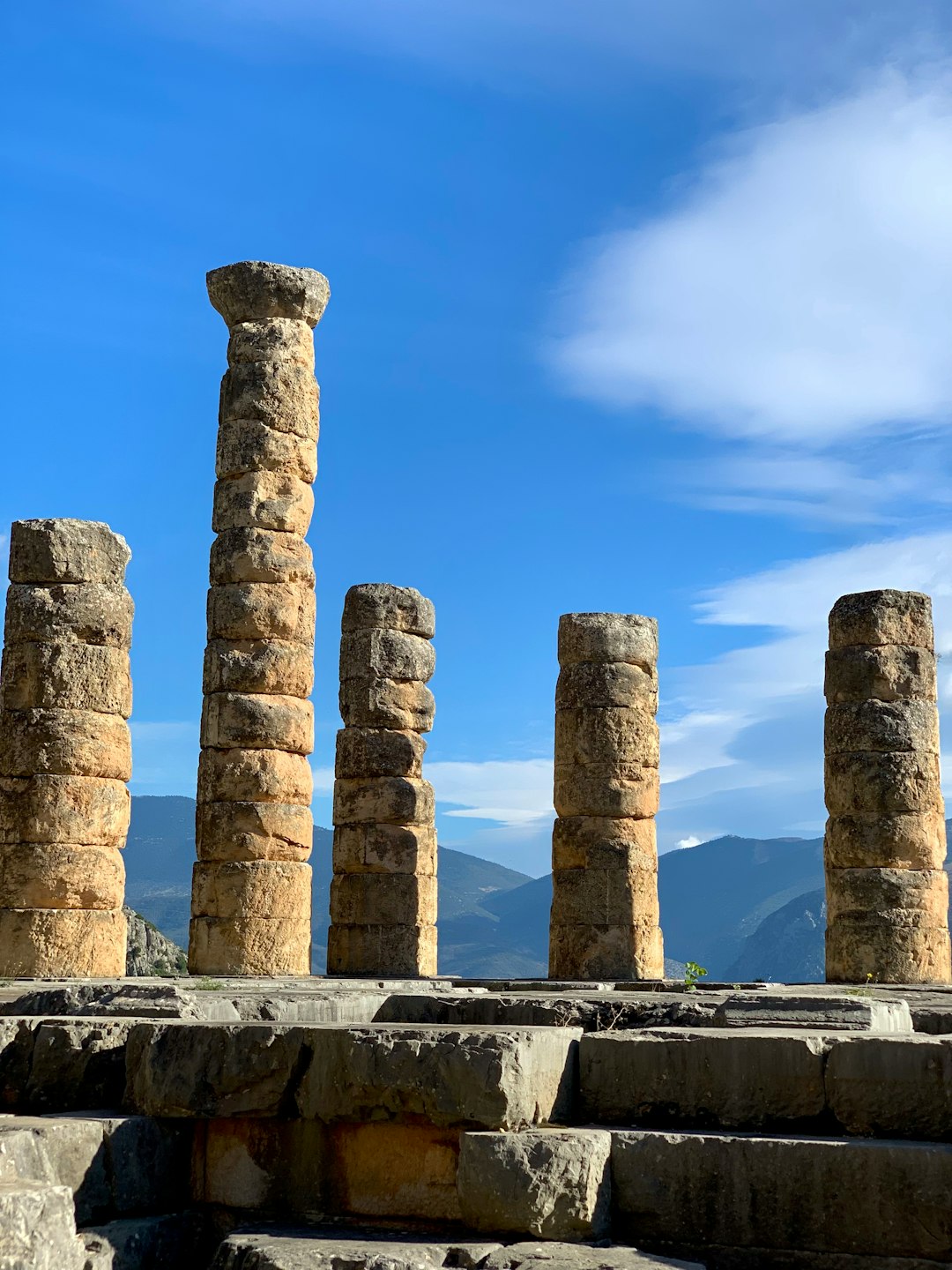As the dust settles on our post pandemic world, it finds itself grappling with widespread social unrest and pervasive economic uncertainty, in conjunction with our everyday struggles as individuals. It is here that the marriage of ancient wisdom and therapy emerges as a guiding light, offering timeless insights into the human condition. By weaving together the principles of therapy and ancient philosophy, we can embark on a transformative journey of self-discovery and emerge more resilient.

The Greek word “therapeia” (θεραπεία) is derived from the Greek verb “therapeuo” (θεραπεύω), which means “to serve” or “to attend to.” The ancient Greeks believed the interconnectedness of the mind, body, and spirit, and therapy encompassed all aspects of holistic healing. Within Greek mythology, the gods themselves were often associated with therapeutic practices. For example, Apollo, the Greek god of healing, was often invoked for the restoration of physical and mental health. So, therapeia was sometimes used to describe the activities carried out in Apollo’s temples, where individuals sought healing through prayer, offerings, and ritual practices.
Therapy and ancient philosophy share a common goal: the pursuit of inner harmony and eudaimonia, or flourishing.

Therapy and ancient philosophy share a common goal: the pursuit of inner harmony and eudaimonia, or flourishing. Ancient philosophers believed that true happiness and fulfillment came not from external circumstances but from cultivating virtues and aligning one’s actions with one’s values. In a similar vein, therapy aims to help individuals find a sense of meaning and purpose, develop self-compassion, and build resilience in the face of life’s challenges.
Stoicism offers particularly relevant insights in the context of therapy. It teaches individuals to distinguish between what is within their control and what is not, and to focus their energy on the former. The philosophy also emphasizes the importance of accepting life’s uncertainties, managing emotions, and cultivating a sense of gratitude. These Stoic principles can be integrated into therapy to help individuals navigate difficulties, develop resilience, and foster a sense of tranquility amid the storms of life.
Stoicism and Cognitive Behavioral Therapy
Stoicism and Cognitive Behavioral Therapy (CBT) share several similarities and have a significant relationship. CBT is a form of psychotherapy that focuses on the connections between thoughts, emotions, and behaviors, aiming to identify and modify negative patterns of thinking and behavior. Stoicism, on the other hand, is a philosophy of life and emphasizes the importance of reason, virtue, and acceptance of the things we cannot control. The main goal of Stoic-therapy is apatheia (ἀπάθεια) which is freedom from being bound to our irrational passions such as anger, fear, or sadness.
The relationship between Stoicism and CBT lies in their shared principles and practices. They both highlight the role of our thoughts in shaping our emotions and behaviors; and recognize that it is not external events themselves that cause distress, but rather our interpretation and perception of those events. Both approaches emphasize the power of examining and challenging our thoughts and beliefs to foster healthier emotional and behavioral responses.
…the Stoic notion of “cognitive distancing” encourages individuals to step back from their immediate reactions and consider alternative interpretations of events, which is similar to CBT’s technique of cognitive restructuring.
For example, the Stoic notion of “cognitive distancing” encourages individuals to step back from their immediate reactions and consider alternative interpretations of events, which is similar to CBT’s technique of cognitive restructuring. Stoicism also encourages individuals to focus on what is within their control, while accepting that there are things outside their control, aligning with CBT’s emphasis on identifying and changing the aspects of a situation that can be influenced.
When our keynote speaker for our Philosophy & Resilience event, Tim Lebon— CBT practitioner and author of 365 Ways to Be More Stoic—was asked about how ancient Stoicism has helped his clients he replied,
“Sometimes Stoicism can help dramatically. In 365 Ways, we give the example of one man whose life was turned around when he heard about the dichotomy of control and the Serenity Prayer. For the previous decade his life had been ruined by focusing on past misfortunates over which he had no control. The DOC helped him realize that he had a choice – to stay in the past or move forward.
People struggling with long-term health conditions can be helped by similar ideas. They can’t control the fact that they have a particular condition but they can control how they respond to it.
Seneca’s short work On Anger contains so many valuable ideas and memorable phrases. It’s common to hear people to say that you need anger to fight injustice. ‘No!’, reply Seneca and the Stoics, you need courage and wisdom to do this, not anger.
Perhaps the biggest impact though is with people suffering from anger and frustration. Seneca’s short work On Anger contains so many valuable ideas and memorable phrases. It’s common to hear people say that you need anger to fight injustice. No!, reply Seneca and the Stoics, you need courage and wisdom to do this, not anger. The red mist obscures your ability to see things properly and fairly. Or, as Seneca puts it
The sword of justice is ill-placed in the hands of an angry person
Seneca, On Anger 1.19 …”
In this period of flux and unpredictability, CBT teaches a range of coping skills, such as relaxation techniques, mindfulness, and stress management. These strategies help individuals develop healthier ways of dealing with stress and adversity, reducing the negative impact on their resilience. It also offers constructive strategies to overcome our limits and fears, rooted in false beliefs, that inhibit us from moving forward in life. Behavioral modification in CBT encourages individuals to engage in activities that promote well-being and build resilience. By gradually increasing exposure to challenging situations, individuals can develop confidence and adaptive responses, strengthening their resilience over time.
Tim LeBon will be “Introducing the STOIC Framework to Help you Become More Resilient”, incorporating both Stoicism and CBT, this Saturday, May 20th at 12pm EDT at Choose Not to Be Harmed: Philosophy & Resilience. His book 365 Ways to Be More Stoic is a part of our grand prize giveaway of a 5-book hardcover set of the 365 series! (courtesy of John Murray Press)
Three runner ups will receive a hardback copy of Michael Fontaine’s How to Grieve: An Ancient Guide to the Lost Art of Consolation inspired by Cicero! (courtesy of Princeton University Press)
Together, CBT and Stoicism provide powerful tools to navigate uncertainty, build resilience, and find inner harmony in the face of adversity.
Join our keynote Tim LeBon and other living testaments to resilience like Karen Duffy, Prof. Nancy Sherman and more as they share insights into cultivating resilience through a Stoic lens at this Saturday’s virtual event, Choose Not to Be Harmed: Philosophy and Resilience. Hosted by Donald Robertson and Anya Leonard of Classical Wisdom Weekly.
It is FREE to register. However, you also have the option of donating an amount of your choosing. Your generosity keeps us putting on these events. Donations also go towards the development of an on-site location near the original site of Plato’s Academy in Akademia Platonos, Athens.
“Choose not to be harmed—and you won’t feel harmed. Don’t feel harmed—and you haven’t been.” —Marcus Aurelius
We look forward to seeing you this Sat, May 20th at 12pm EDT!
